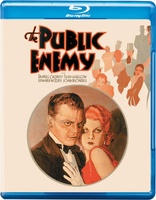The Public Enemy Blu-ray Movie
HomeThe Public Enemy Blu-ray Movie 
Warner Bros. | 1931 | 84 min | Not rated | May 21, 2013Movie rating
7.7 | / 10 |
Blu-ray rating
| Users | 0.0 | |
| Reviewer | 4.5 | |
| Overall | 4.5 |
Overview
The Public Enemy (1931)
An Irish-American street punk tries to make it big in the world of organized crime.
Starring: James Cagney, Jean Harlow, Edward Woods, Joan Blondell, Donald Cook (I)Director: William A. Wellman
| Drama | Uncertain |
| Crime | Uncertain |
Specifications
Video
Video codec: MPEG-4 AVC
Video resolution: 1080p
Aspect ratio: 1.37:1
Original aspect ratio: 1.37:1
Audio
English: DTS-HD Master Audio Mono (48kHz, 24-bit)
German: Dolby Digital Mono
Subtitles
English SDH, French, German SDH, Portuguese, Spanish, Korean
Discs
25GB Blu-ray Disc
Single disc (1 BD)
Playback
Region free
Review
Rating summary
| Movie | 5.0 | |
| Video | 4.5 | |
| Audio | 4.0 | |
| Extras | 3.0 | |
| Overall | 4.5 |
The Public Enemy Blu-ray Movie Review
"Oh, Tommy, I Could Love You to Death!"
Reviewed by Michael Reuben May 17, 2013Note: "The Public Enemy" is available either separately or as part of the Warner Ultimate Gangsters Collection: Classics. The year after Edward G. Robinson became a star in Little Caesar, another Warner Bros. contract player named James Cagney exploded onto movie screens as bootlegger Tom Powers in The Public Enemy. But Cagney's casting in the lead role almost didn't happen. Until just two weeks before shooting began (less in some accounts), he was slated to play the secondary role of Powers' sidekick, Matt Doyle. Traces of the original casting are still visible in early scenes where Powers and Doyle appear as kids; the uncredited child actor playing Doyle clearly resembles Cagney more than he does Edward Woods, who was originally cast as Powers. When the leads were switched, no one bothered to switch the children. Various accounts exist to explain the change, but the consensus is that it was director William Wellman who made the decision. It had become clear to him that Cagney would steal the picture no matter what role he played; so he might as well do it as the lead. Just as Marlon Brando redefined screen acting in the Fifties, Cagney recreated it for the Thirties. He abandoned the declamatory style of speaking that had characterized "talkies" up to that point (largely because of the technical demands of sound recording) and spoke at a machine-gun pace, like the streetwise New Yorkers with whom he'd grown up. He was a great improviser, not of dialogue but of gestures that added spontaneity and immediacy to his performance. And his background as a dancer gave his movement a distinctive quality—not exactly graceful, but very much at ease in the space around him. Sitting, standing, walking or running, Cagney always drew the viewer's eye. The screenplay by Harry F. Thew was based on an unpublished novel entitled Beer and Blood by two Chicago natives who had witnessed Al Capone's violent escapades in Chicago. The authenticity of detail in their source material allowed Thew and Wellman to surround Cagney's vivid portrait of a street punk ascending the criminal ranks with the kind of specificity that Little Caesar lacked. While Cagney held everyone's attention, Wellman's careful staging and precise framing provided a clear explanation of how bootlegging functioned, how product was acquired, how "sales" were made with violence, how turf battles were waged and, indirectly, how the entire enterprise was a creature of Prohibition. (Brian De Palma's account over half a century later in The Untouchables was bigger and flashier, but it was essentially the same story.) If one considers the manner in which Martin Scorsese's gangster epics meld the thrill of the criminal lifestyle with a meticulous examination of how illegal enterprises function, it's not surprising to find Scorsese extolling the virtues of The Public Enemy on the disc's extras. The film provided a model for both Goodfellas and Casino.
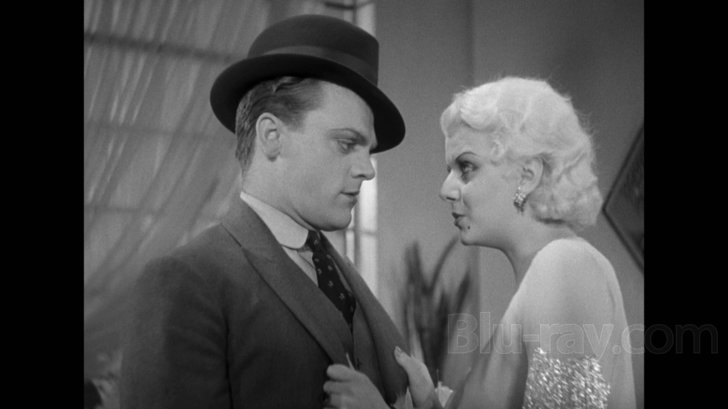
Tom Powers (Cagney) and Matt Doyle (Woods) begin their career in 1909 as petty thieves who sell their loot to a low-level hood known a "Putty Nose" (Murray Kinnell). Tom has no hesitation pursuing this kind of activity, even though his father is a cop and a stern disciplinarian. After a few years, Tom and Matt graduate to bigger jobs. When Putty Nose gives them pistols and brings them along on the burglary of a fur warehouse, something goes wrong, and Tom has to kill someone. He doesn't seem bothered by it, but Putty Nose disappears and leaves them to fend for themselves. (Years later, they catch up with him, and scores are settled.) By this point, Tom's father is out of the picture, for reasons never disclosed. His doting mother (Beryl Mercer) has blinders on where her children are concerned. But Tom's older brother, Mike (Donald Cook), sees exactly what is happening to Tom and cannot hide his disapproval. When America enters World War I, Mike enlists but Tom stays behind. By the time Mike returns, the brothers have become bitter enemies. Tom and Matt acquire a mentor in Paddy Ryan (Robert O'Connor), a well-connected tavern owner. With the advent of Prohibition, Ryan is already prepared to go into business with a Runyon-esque hoodlum called "Nails" Nathan. Ryan enlists Tom and Matt as enforcers in his bootlegging business, and they are quickly earning enough money to set themselves up in style with an apartment, a flashy car and a pair of girlfriends, Kitty (Mae Clarke) and Marnie (Joan Blondell). Except for his mother, though, Tom finds women a nuisance. The scene where he grows impatient with Kitty and shoves a grapefruit in her face is one of the film's most famous. It was based on actual incident, but at the time of the film's release, women's groups protested. But every man has his soft spot, and Tom's turns out to be a woman named Gwen Allen (Jean Harlow), who is unlike anyone Tom has ever met. Their few scenes together are bizarre, off-kilter and stylistically different from the rest of The Public Enemy, as if Gwen held the promise of a life different from anything Tom has ever known. Nevertheless, as if to prove that Tom can't escape who he's become, their brief interlude together is interrupted at its tenderest moment by shocking news that changes everything for Tom's and Matt's future. I will leave the details unspecified for the sake of first-time viewers, but the developments are enough to push all thoughts of Gwen out of Tom's head and send him off on a mission of revenge (though not of the kind typically associated with gangster films). A turf war erupts between Paddy Ryan's outfit and the encroaching gang of "Schemer" Burns for control of the drinking establishments that Tom and Matt formerly controlled. Wellman stages one scene after another that will quickly become archetypes of the gangster genre: the bombing of one side's headquarters, an early version of "going to the mattresses", a brazen shootout, anxious phone calls, a tearful family gathered around a hospital bed. The one thing that Wellman could not do was end the film on the kind of morally ambiguous note that a modern audience would accept without question. In its earliest days, the gangster film was viewed with suspicion both as a form of exploitation film and as a potential "how to" guide for would-be criminals learning their trade. Studios had to go out of their way to ensure that no one could accuse them of endorsing or encouraging criminal behavior. The Public Enemy opens with a disclaimer, and the film's ending had to be appropriately judgmental. Cagney's Tom Powers has indulged in the criminal life with gusto, which means that both he and his family must suffer the consequences. The ending of The Public Enemy is intended to serve as a stark reminder that crime doesn't pay—except, of course, for those who make movies about it.
The Public Enemy Blu-ray Movie, Video Quality 
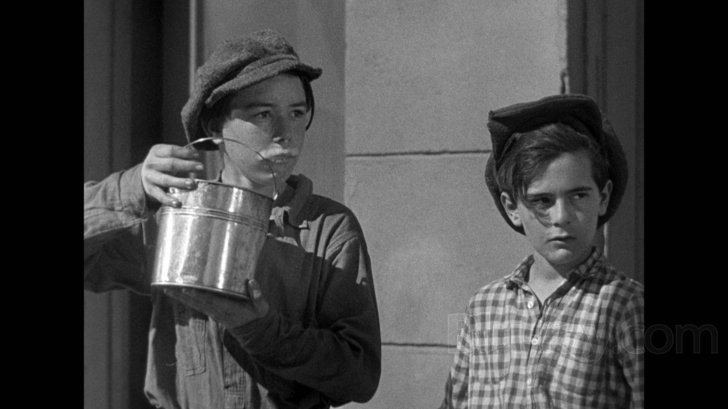
Although The Public Enemy is only one year older than Little Caesar, its source material is in considerably better shape, with only an occasional vertical scratch betraying the age of the element and no missing frames or jumps. Once again, Warner has provided a nicely film-like transfer on this 1080p, AVC-encoded Blu-ray. The image features natural-looking grain, deep blacks, well-balanced contrast allowing proper delineation of shades of gray, and detail that is consistently impressive for a film from this era. Even for viewers who have seen The Public Enemy many times, I suspect this version will be a revealing experience, because the Blu-ray allows the viewer to savor every nuance of Cagney's expressively detailed performance in a way that has not been previously possible outside of a screening room. This is one of the quintessential gangster films as it was meant to be seen.
The Public Enemy Blu-ray Movie, Audio Quality 
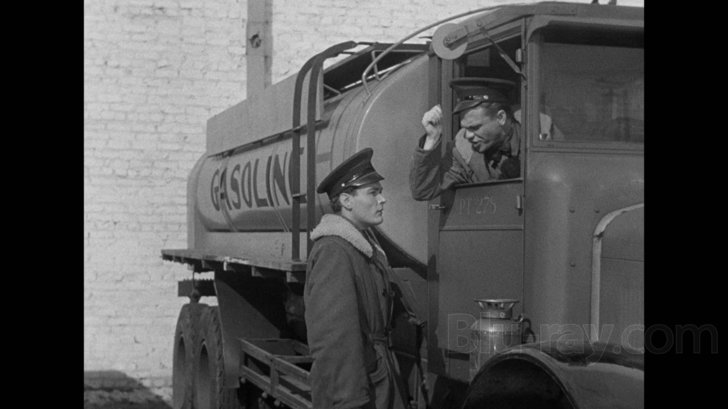
The film's mono soundtrack is encoded as lossless DTS-HD MA 1.0, and it's a fine track. Cagney's distinctive rhythms and intonations are reproduced with all the clarity of the original Vitaphone recording, and they're all the more vivid for the contrast with the various tones and accents from the remaining cast, whether it's Robert O'Connor's Irish lilt as Paddy Ryan or Jean Harlow's undisguised Bronx intonation. Most of the violence occurs off-screen, but the gunshots are numerous and have a decent impact for a Thirties film. The film has no original score; all of the music is so-called "source" music that has been carefully chosen for deliberate effect. Chief among the selections is "I'm Forever Blowing Bubbles", which recurs in different versions throughout the film. Each version has just the right sound on the track.
The Public Enemy Blu-ray Movie, Special Features and Extras 
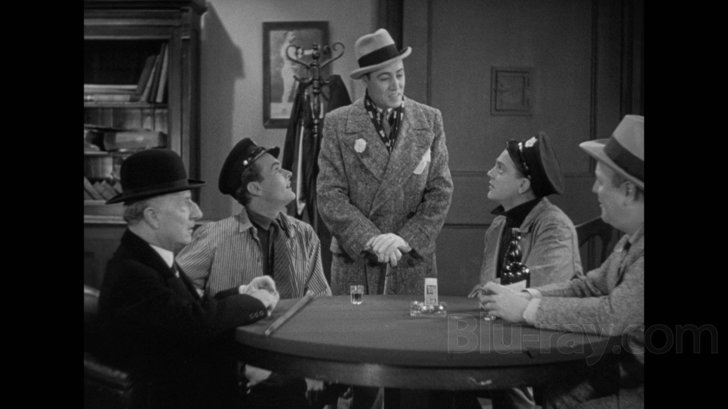
The extras have been ported over from Warner's 2005 DVD.
- Commentary with Robert Sklar: Sklar, who passed away in 2011, was a historian specializing in cinema and author of the book City Boys: Cagney, Bogart, Garfield, among others. His commentary is conversational and informative, though with an increasing number of pauses near the end. Sklar provides a wealth of detail on Cagney's background and the logistics of producing The Public Enemy. He also links elements in the film to Cagney's later work.
- Warner Night at the Movies 1932
- Introduction by Leonard Maltin (480i; 1.33:1; 3:16): The well-known critic and film historian provides an introduction to the various items from 1932 listed below.
- "Blonde Crazy" Theatrical Trailer (480i; 1.33:1; 2:37): Another Warner film from 1931 starring Cagney and Joan Blondell. Cagney was not yet a big enough star to have his name used to sell the film, but it's obvious even from the trailer that he was stealing all his scenes.
- Newsreel (480i; 1.33:1; 1:34): Coverage of training for the women's Olympics.
- Short: "The Eyes Have It" (480i; 1.33:1; 9:57): A Vitaphone short featuring ventriloquist Edgar Bergen and his famous dummy, Charlie McCarthy.
- Cartoon: "Smile, Darn Ya, Smile!" (480i; 1.33:1; 7:00): A Merrie Melody plugging a current Warner Bros. song that fans of Who Framed Roger Rabbit? should recognize.
- Short Feature: Beer and Blood: Enemies of the Public (480i; 1.33:1; 19:37): The highlight of this short documentary on The Public Enemy is the participation of director Martin Scorsese, who describes his first encounter with the film as a child and the reasons why he regards it as a masterpiece. Of particular note is Scorsese's account of screening the film for select cast and crew of The Aviator, who burst into spontaneous applause at the conclusion.
- 1954 Rerelease Foreword (480i; 1.33:1; 0:45): A portentous text crawl that accompanied a theatrical re-release of Little Caesar and The Public Enemy, reminding us that we must all stand together in the fight against crime.
- Theatrical Trailer (480i; 1.33:1; 0:48): "A Few Scenes Cannot Do Justice To [the] Most Powerful Picture of the Year".
The Public Enemy Blu-ray Movie, Overall Score and Recommendation 
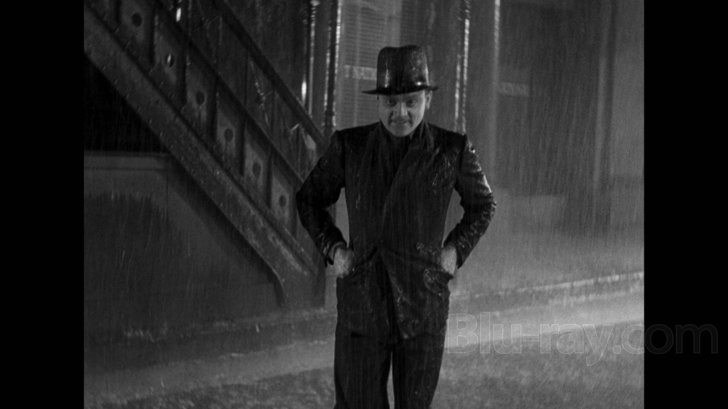
After the success of The Public Enemy, Cagney struggled for the rest of his career against typecasting, interspersing gangster roles with comedies and musicals wherever possible, including his Oscar-winning turn as song-and-dance man George M. Cohan in 1942's Yankee Doodle Dandy. But popular culture chooses its own icons, and just as Clint Eastwood (who has cited Cagney as a major influence) will always be known as Dirty Harry and the Man with No Name, Cagney is still primarily remembered as Tom Powers and White Heat's Cody Jarrett. Throughout his life, whenever Cagney dined out, admiring fans would order grapefruit to be sent to his table. Ever appreciative of his audience, the amiable star would invariably eat it. If you're not familiar with the association, watch The Public Enemy. Highly recommended.
Similar titles
Similar titles you might also like

Little Caesar
1931

The Petrified Forest
1936

Live by Night
2016

The Roaring Twenties
1939

Scarface 4K
1932

Once Upon a Time in America
Extended Director's Cut
1984

Billy Bathgate
1991

The Irishman
2019

Boardwalk Empire: The Complete Fifth Season
2014

White Heat
1949

Scarface 4K
Gold Edition
1983

Point Blank
1967

The Miami Story
1954

GoodFellas
1990

City of God
Cidade de Deus
2002

Casino 4K
1995

A Prophet
Un prophète
2009

Road to Perdition
2002

The Godfather: Part II 4K
1974

A Most Violent Year
2014
